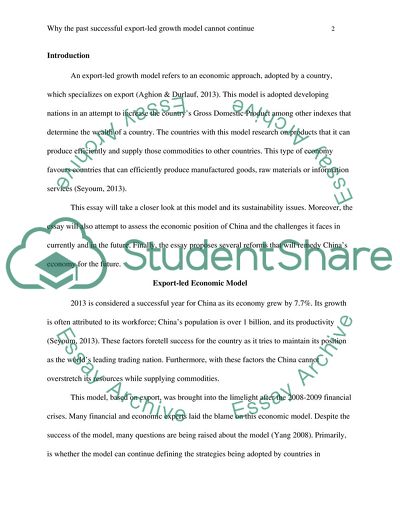Why the past successful export-led growth model cannot continue Essay. https://studentshare.org/macro-microeconomics/1817359-why-the-past-successful-export-led-growth-model-cannot-continue
Why the past Successful Export-Led Growth Model Cannot Continue Essay. https://studentshare.org/macro-microeconomics/1817359-why-the-past-successful-export-led-growth-model-cannot-continue.


